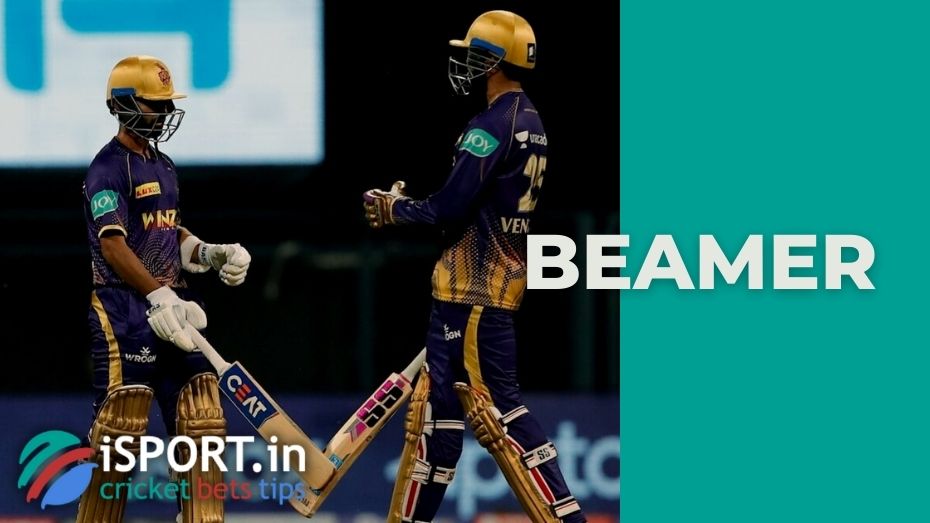Beamer

Despite the external easiness, cricket is not considered a particularly safe sport. There is a reason cricketers wear helmets on the field. At the amateur level, players typically play with a professional ball, which is lighter and safer than the professional cricket ball. Athletes experience the greatest risks when bowlers throw. One of the most dangerous deliveries is the beamer in cricket — a ball that reaches the batsman at or above waist height without bouncing.
Beamer In Cricket: The Basics
Why do players perform beamer in cricket despite knowing the risks? The fact is that such a throw is not always made intentionally. Most often, such actions can be seen from young players who haven’t yet mastered control. Sometimes throwing players bowl a yorker which goes askew. Sometimes bowlers are hindered by a wet ball or sweaty hands. In the heat of competition, players might forget to properly dry the ball, and in light rain, the situation becomes even more challenging.
Technically, it is more difficult for a bowler to control high throws than low ones. Meanwhile, the batsman expecting the ball to hit the wicket may misread the beamer and get hit. To manage such situations, Law 41.7 outlines the umpire’s responsibilities. In Test matches, a beamer results in a no-ball and a formal warning. In the One Day International and Twenty20 International cricket formats, the umpire indicates a free hit and also issues a warning. Repeated violations of this rule can lead to the suspension of a cricketer for the end of an innings or even a match.
There’s a similar type of delivery in cricket called a bouncer. In this case, the bowler can legally send the ball towards the opponent’s head. Why is this strike legal, unlike beamer in cricket? The key difference is trajectory—a bouncer is easier to anticipate and defend because it follows a predictable path.
Beamer In Cricket: Player Disqualifications
Most often, umpires issue warnings, after which the players are careful and no longer throw the beamer in cricket. However, there have been notable exceptions where cricketers were disqualified for violating the beamer rule:
- Waqar Younis from Pakistan was disqualified at the World Cup in 2003. In the 49th over of the match against the Australian national team, Younis twice made a dangerous throw towards Andrew Symonds. Umpire Clive Lloyd, after consulting with his assistants, decided to remove the player before the end of the game. Younis later explained: “The first one slipped from my hand and [the umpire] warned me. Then it happened again, so I couldn’t bowl my last few balls. I did apologize to Simmo [Symonds], you should ask him.” It should be noted that the disqualification did not affect further participation in the tournament. Andrew Symonds accepted the opponent’s apology, although he admitted that he was very angry during the game. Now Waqar Younis is the coach of the Pakistan national team.
- At the 2014 Asian Cup, another Pakistani player, Abdur Rehman, was removed from the field during the match. He threw three consecutive beamers in a game against Bangladesh. For the first time in the history of cricket, a player remained without actually bowling a single legitimate ball, although at the same time he took 8 wickets. After the first two beamers, umpire Johan Cloete summoned team captain Misbah-ul-Haq to issue a warning. Unfortunately, Rehman committed another violation, leading to his removal. That 2014 season marked his final appearance for Pakistan before retiring from international cricket.
For sure, strict penalties for a beamer in cricket appeared after several cases when players died on the field due to strong hits of the ball in the head.
